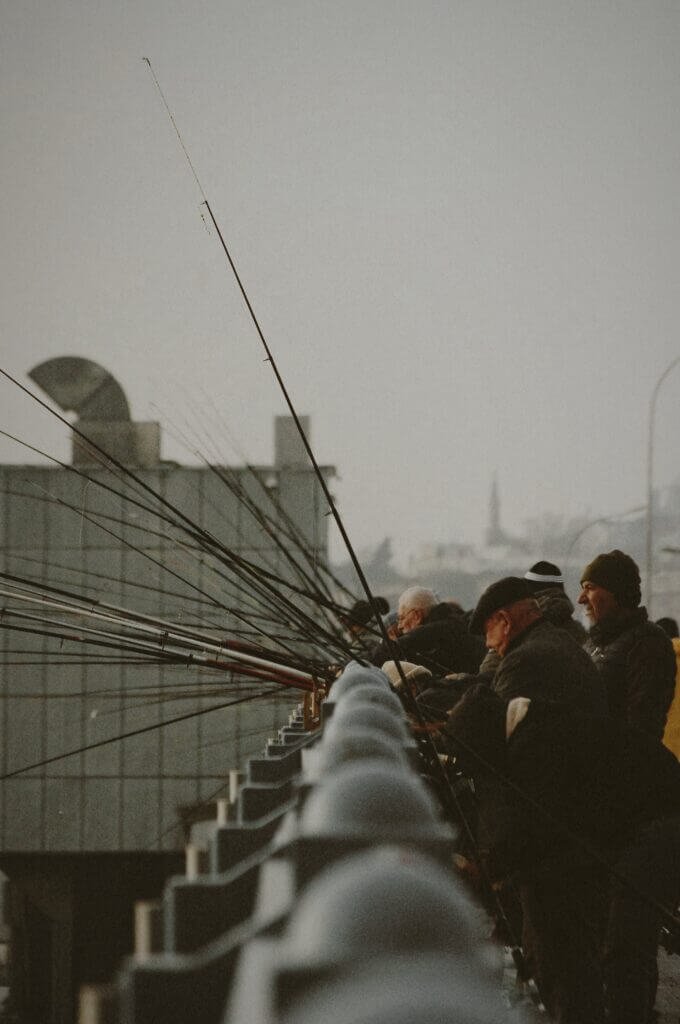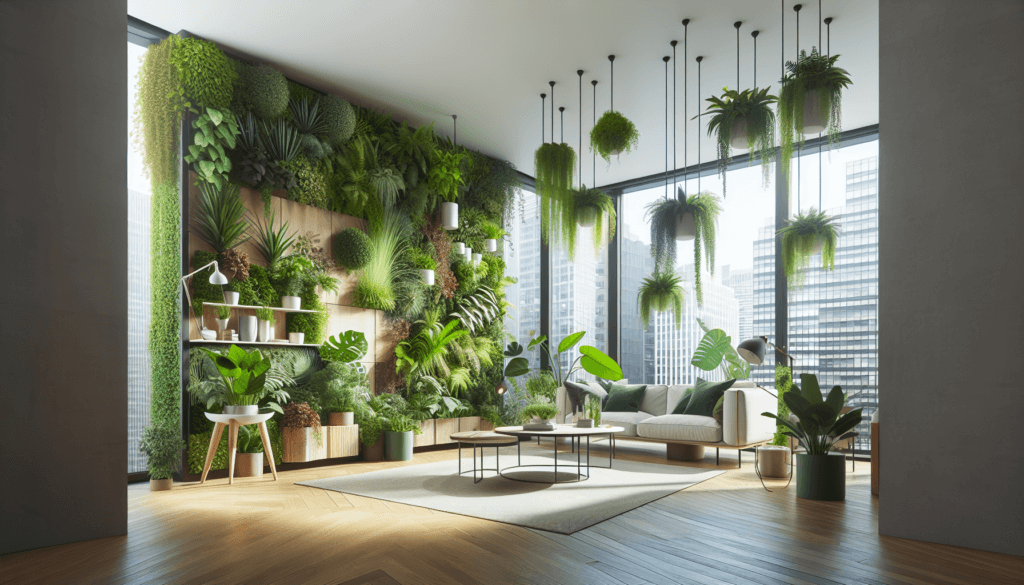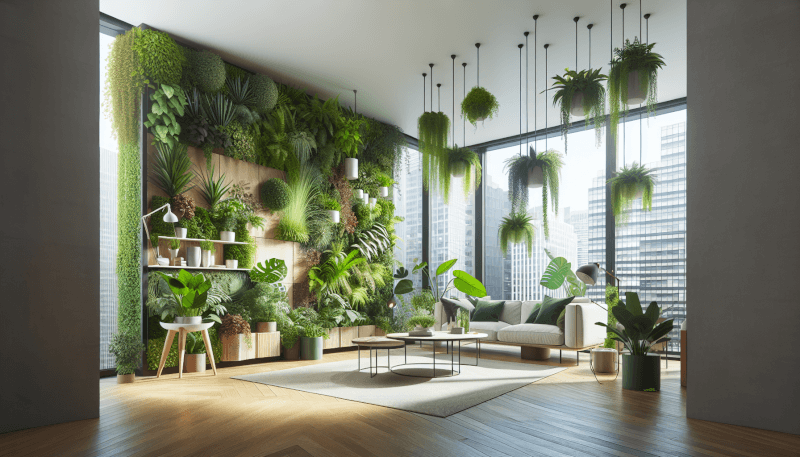Have you ever dreamed of having a lush garden in your small city apartment, but thought it was impossible? Think again! Creating a vertical garden in your urban dwelling is easier than you might imagine. With a little creativity and some strategic planning, you can transform your limited space into a vibrant oasis of greenery. Discover simple techniques and innovative ideas that will allow you to bring nature inside and create a stunning vertical garden that will leave all your friends in awe. Say goodbye to the limitations of urban living and hello to your very own urban jungle!

Choosing the Right Location
When it comes to creating a vertical garden in your city apartment, choosing the right location is crucial. Evaluate the available space in your apartment and identify walls or areas that can accommodate a vertical garden. Consider factors such as the amount of sunlight the location receives, as well as the weight-bearing capacity of the wall or structure that you plan to use for your garden.
Evaluate available space
Take a look around your apartment and identify potential areas where you can set up your vertical garden. This could be a wall near a window, a balcony railing, or even a corner that can be transformed into a lush green oasis. Make sure to choose a location that allows easy access for watering and maintenance.
Consider lighting conditions
Pay attention to the lighting conditions in your apartment. Different plants have varying sunlight requirements, so it is important to choose a location that provides adequate light for your chosen plants. If your apartment has limited natural light, consider using grow lights to supplement the light needs of your vertical garden.
Check for weight-bearing capacity
Before installing your vertical garden, it is essential to assess the weight-bearing capacity of the wall or structure that will support it. Plants, soil, and watering systems can be heavy, so ensure that the chosen location can withstand the load. If in doubt, consult a professional to ensure the safety and stability of your vertical garden.
Selecting the Right Plants
Choosing the right plants for your vertical garden is crucial to its success. Consider plants suitable for vertical growing, taking into account their size, growth habit, and adaptability to restricted spaces. Also, consider the sunlight requirements of the plants you intend to grow and ensure that they are suitable for the location you have chosen.
Choose plants suitable for vertical growing
Certain plants are well-suited for vertical growing, as they have naturally cascading or climbing habits. Examples include ivy, trailing flowers, and vine plants. These plants not only add depth and texture to your vertical garden but also make the most of limited space.
Consider sunlight requirements
Different plants have varying sunlight requirements, ranging from full sun to partial shade. Take note of the amount of sunlight your chosen location receives throughout the day and match it with the sunlight requirements of your preferred plants. This will ensure that your plants thrive and flourish in their vertical habitat.
Check for plants that thrive in small spaces
Since you will be working with limited space in your city apartment, it is important to select plants that can thrive in small spaces. Look for compact varieties or those specifically bred for container gardening. A mix of herbs, small vegetables, and ornamental plants can create a beautiful and functional vertical garden in your apartment.

Choosing the Right Structure
The structure you choose for your vertical garden will not only provide support for your plants but also add aesthetic appeal to your space. Consider different options such as wall-mounted structures, freestanding units, or modular systems to find the best fit for your apartment.
Consider wall-mounted options
Wall-mounted vertical gardens are a popular choice for apartments with limited floor space. These designs typically involve attaching containers or plant pockets directly to the wall. They are perfect for creating a living wall that acts as a captivating focal point in your home.
Opt for freestanding structures
If you have some floor space to spare, freestanding vertical gardens can be an excellent choice. These structures often come in the form of tiered racks or shelving units that allow you to arrange your plants vertically. Freestanding structures offer flexibility in terms of placement and can be easily moved if needed.
Consider modular systems
Modular systems provide a versatile and customizable option for creating a vertical garden. These systems typically consist of individual panels or containers that can be arranged and connected to create your desired garden layout. Modular systems are perfect for apartment dwellers who want to experiment with different plant arrangements and layouts.
Creating a Supportive Framework
Once you have selected the right location and structure for your vertical garden, it is time to create a supportive framework that will ensure the stability and longevity of your plants. Depending on your chosen structure, there are a few options to consider, such as wall anchors or brackets, trellises or wire mesh, and wooden frameworks.
Install wall anchors or brackets
If you have chosen a wall-mounted vertical garden, installing wall anchors or brackets is essential to support the weight of your plants. These anchors or brackets provide a secure attachment point for your vertical garden and help distribute the weight evenly across the wall.
Set up a trellis or wire mesh
A trellis or wire mesh can be used to provide additional support for climbing plants or those with trailing habits. These structures can be attached to walls or freestanding units, and they offer a framework for plants to grow and thrive. Ensure that the trellis or mesh is securely installed to prevent any damage or accidents.
Build a wooden framework
In some cases, you may choose to build a wooden framework to support your vertical garden. This option is ideal for freestanding structures or if you prefer a more rustic and natural look for your garden. Build a sturdy wooden frame that can accommodate the weight and size of your plants, and secure it in place to maintain stability.

Preparing the Vertical Garden
Before planting your chosen plants, it is essential to prepare the vertical garden to ensure optimal growing conditions. This includes ensuring proper drainage, providing adequate irrigation, and preparing the soil or growing medium.
Ensure proper drainage
Proper drainage is crucial to prevent waterlogging and the development of root rot. Ensure that your chosen structure has adequate drainage holes or a system in place to allow excess water to escape. This will help keep your plants healthy and thriving.
Provide adequate irrigation
Vertical gardens can require more frequent watering compared to traditional gardens due to their compact nature. Consider installing an irrigation system that will efficiently water your plants without causing water wastage. Alternatively, hand-watering can also be done using watering cans or spray bottles.
Prepare the soil or growing medium
The choice of soil or growing medium is vital for the success of your vertical garden. Use a lightweight potting mix specifically formulated for container gardening to ensure adequate aeration and water retention. Alternatively, hydroponic or aeroponic systems can be used for certain types of plants to eliminate the use of soil altogether.
Planting and Arranging the Plants
Now comes the exciting part – planting and arranging the plants in your vertical garden. Follow the planting instructions specific to each plant, arrange them based on size and requirements, and consider the aesthetics and color coordination of the overall composition.
Follow planting instructions
Each plant will have specific planting requirements, such as depth, spacing, and the need for support. Follow the instructions provided on the plant tags or consult reputable gardening resources to ensure that you plant your chosen plants correctly. Proper planting techniques will help your plants establish and grow successfully.
Arrange plants based on size and requirements
When arranging the plants in your vertical garden, consider their sizes and growth habits. Place taller plants at the back or in the center, with smaller plants towards the front or edges. This will create depth and visual interest in your garden. Additionally, consider the watering and light requirements of each plant to ensure harmonious growth.
Consider aesthetics and color coordination
Vertical gardens can be a wonderful opportunity to create an aesthetically pleasing display in your city apartment. Arrange your plants in a way that creates a visually appealing composition. Consider color coordination, textures, and contrasting foliage to create a vibrant and eye-catching vertical garden that complements your space.

Maintenance and Care
Like any garden, a vertical garden requires regular maintenance and care to ensure the health and longevity of your plants. This includes regular watering and monitoring, fertilizer application as needed, and pruning and training of your plants to maintain their desired shape.
Regular watering and monitoring
Monitor the moisture levels of your vertical garden regularly and adjust the watering accordingly. Vertical gardens can dry out quickly, especially in warmer climates, so it is essential to check the moisture levels and water when needed. Ensure that you water thoroughly, allowing the water to reach all areas of the garden and soil or growing medium.
Fertilize as needed
Plants in a vertical garden may require additional nutrients due to the limited space and resources. Feed your plants with a balanced fertilizer appropriate for their specific needs. Follow the instructions on the fertilizer packaging and avoid over-fertilizing, as it can lead to nutrient imbalances and damage to your plants.
Prune and train plants
Maintain the shape and growth habit of your plants by regularly pruning and training them. Remove any dead or yellowing leaves, trim excessive growth, and guide climbing or trailing plants along their support structures. Pruning and training not only improve the appearance of your vertical garden but also promote healthy growth and prevent overcrowding.
Dealing with Potential Challenges
Despite your best efforts, challenges can arise when maintaining a vertical garden in a city apartment. Being prepared and proactive will help you address these challenges effectively.
Pest control measures
Pests can infest your vertical garden, affecting the health and appearance of your plants. Monitor your plants regularly for signs of pests, such as chewed leaves or discolored foliage. Use organic pest control methods, such as neem oil or insecticidal soap, to eliminate pests without harming your plants or the environment.
Addressing poor drainage
Inadequate drainage can lead to waterlogged soil, which can impede plant growth and cause root rot. If you notice poor drainage in your vertical garden, consider adjusting the soil or growing medium composition, or creating additional drainage holes. You can also place gravel or pebbles at the bottom of the containers to improve drainage.
Managing limited space
Limited space is a common challenge when creating a vertical garden in a city apartment. Stay vigilant about your plant’s growth and ensure adequate spacing to prevent overcrowding. Regularly remove any plants that may have outgrown their space to maintain the overall health and appearance of your vertical garden.
Enhancing the Vertical Garden
Once your vertical garden is established and thriving, consider enhancing it further with decorative elements, functional features, and companion plants.
Incorporate decorative elements
Add a touch of elegance and style to your vertical garden by incorporating decorative elements. Hang fairy lights, wind chimes, or ornaments that complement the overall aesthetics of your space. This will create a visually appealing ambiance and transform your vertical garden into a true oasis.
Add functional features
To maximize the functionality of your vertical garden, consider adding practical features. Install hooks or hangers to hold gardening tools or incorporate shelves to display potted herbs or gardening accessories. By adding functional features, you can optimize the use of your limited space while keeping everything organized.
Introduce companion plants
Companion planting involves growing different plants that benefit each other when grown in close proximity. Introduce companion plants that attract beneficial insects, deter pests, or provide a natural shade for delicate plants. This not only enhances the biodiversity of your vertical garden but also improves overall plant health.
Harvesting and Enjoying the Vertical Garden
The moment you have been waiting for has arrived – it’s time to harvest and enjoy the fruits of your labor! Here are a few tips to make the most of your harvest and create a cozy outdoor space to relax and enjoy your vertical garden.
Know when to harvest
Different plants have different harvest times. Familiarize yourself with the ideal time to harvest each plant in your vertical garden. Gently pluck herbs, vegetables, or fruits at their peak ripeness to enjoy the best flavors and nutritional value.
Preparing meals with homegrown produce
One of the joys of having a vertical garden is the ability to grow your own fresh produce. Incorporate the fruits, vegetables, and herbs from your harvest into delicious meals right in your own apartment. Experiment with new recipes and savor the flavors of your homegrown produce.
Create a cozy outdoor space
Make your vertical garden a place of relaxation by creating a cozy outdoor space. Add comfortable seating, outdoor rugs, and decorative accents that transform your balcony or patio into an inviting extension of your apartment. This will allow you to fully enjoy the beauty and tranquility of your vertical garden while spending quality time outdoors.
With these comprehensive steps and tips, you are well-equipped to create a vertical garden in your city apartment. Embrace the beauty of nature, harness the benefits of gardening, and transform your living space into a lush and vibrant oasis that brings joy and tranquility to your day-to-day life. Happy gardening!


